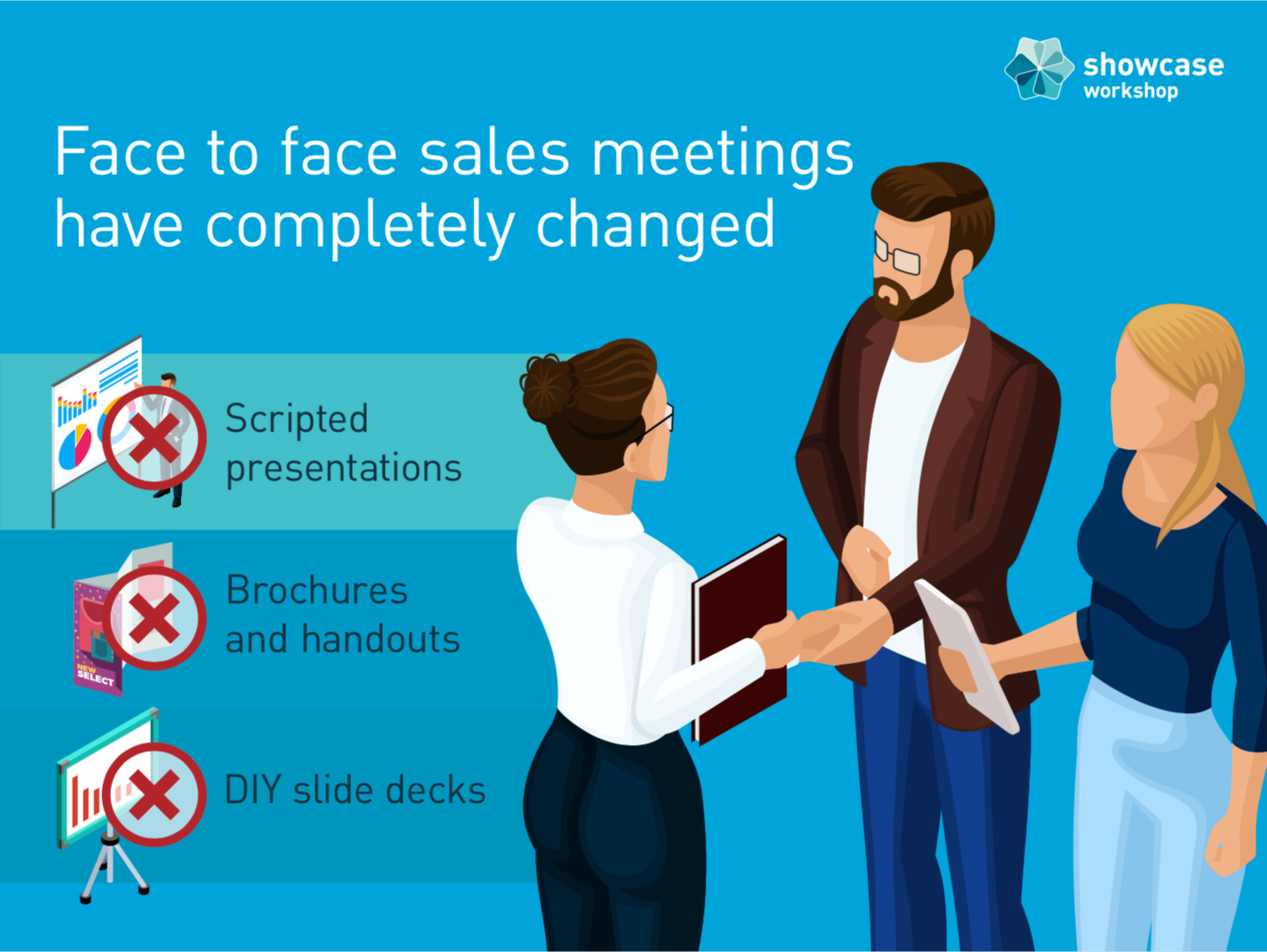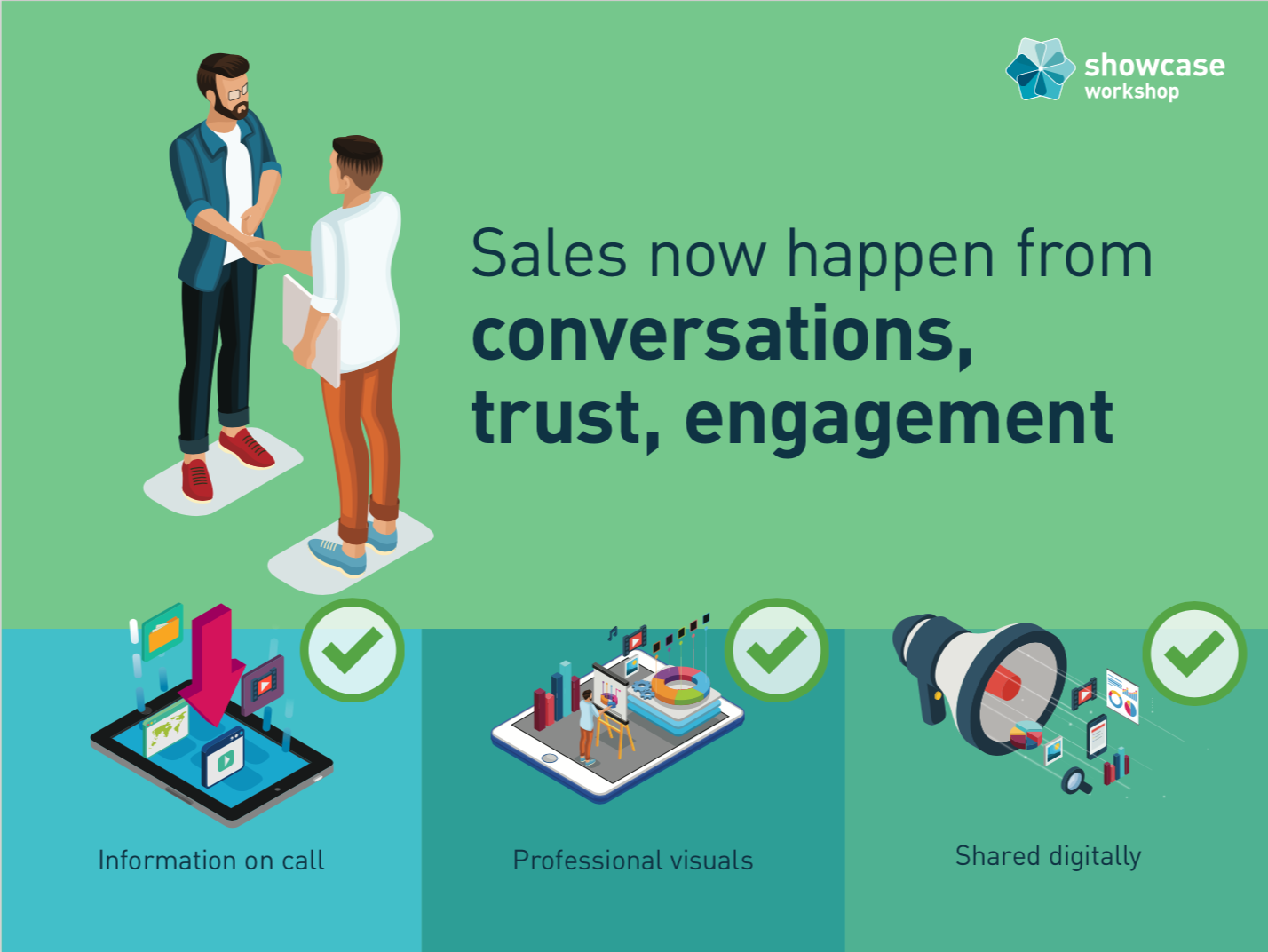Presenting a new idea isn’t always easy. Even if you’ve created the best presentation ever, standing in front of a room and sharing it is enough to make your palms sweat. There’s a reason that the fear of public speaking is more common than the fear of death.
Whether you’re pitching a fresh idea to your own team, or a new product to a customer — it’s challenging to communicate a new idea clearly and in a way that resonates with (and engages) the listener.
Over the years at Showcase Workshop, I’ve had quite a lot of practice presenting new ideas. Even though Showcase isn’t the most complex piece of software in the world, it’s still very much a new idea for many marketers and salespeople that I speak to.
Through trial and error — along with a concerted effort to learn how to communicate more clearly for my team’s sake and our customers’ sakes — I’ve built a framework for presenting new ideas. It helps me avoid the dreaded slightly screwed-up face, gaze off into the distance, "nope, not a single question from me" reactions from colleagues and customers (all signs you've totally lost them along the way).
1. Set Expectations About Your Presentation — and Skip the Chit Chat
Seasoned presenter or not, you probably start by talking about the weather, asking about the customer’s weekend, or chatting about some big game. It’s a natural human tendency to build rapport this way.
You should stop it.
Especially when you’re presenting to potential customers, time and attention are precious and limited. Chit-chat may build rapport — but it can also feel like a waste of time.
Instead, share with your listener how much of their time your presentation will take. And make it 20 minutes or less.
You’ll still build rapport — but by showing your listener that you respect their time. Plus, you’ll build your credibility by showing that you care about keeping the meeting focused on the most important points.
“Thanks so much for meeting with me today. This will only take 20 minutes.”
Simple. Straightforward. Music to their ears.
You don’t need more than 20 minutes to explain your product or service. That’s about the longest you can expect someone to give you their attention anyway — so you need to use that time wisely.
But let me be clear: This 20 minutes is the maximum time you spend presenting. It doesn't include the time it takes for your customers to ask questions. In fact, if you use that 20 minutes wisely, your customers will want to know more — and they’ll have lots of questions for you which turns the presentation into a conversation. Woohoo!
So, plan to present for 20 minutes — but book out an hour in your calendar.
2. Start Your Presentation with What Your Audience Already Knows
I've been doing some investigation and experiments in the last month to think and communicate more clearly in everyday situations as clarity is not always a natural state of being for me. A recurring piece of advice that keeps coming back to me is this: Know your audience and start with them in mind.
This is easier said than done, of course. Like most people, I’m tempted to just get straight to talking about my new idea. For example, jumping right into a new operational idea or a new promotional tactic with my team — which leaves them scratching their heads and wondering where the heck my idea came from.
And that’s with people I know fairly well!
When it comes to presenting ideas or offers to new customers, things get even more challenging. I don’t usually have the luxury of knowing their entire background, or even the full context within which they’re operating. We do our research, but there’s only so much Google can tell us.
The key I’ve found in this situation is instead starting with what they know as it relates to our product.
Whatever you are going to talk to a customer about — whatever new, revolutionary or complex information you are going to give them — there is something in their current experience that you can connect to and start the conversation with. For example:
- What they already know about the previous product model they have
- What the current problem is that they’re trying to solve for
- Where industry standards are broken, or where the bar is set too low

From my years of working with marketers, I know that more often than not, they know their field sales people don't have the time (or the customer attention) to deliver a long, linear PowerPoint presentation — and their brochures and handouts end up on the trash.
I start by acknowledging this and then I hit on a key concern I know most brand and marketing people have — that their sales team is appearing in front of customers with DIY slide decks, stretched logos and other off-brand materials.
3. Include Your Process in Your Presentation to Bring the Audience with You
Once you’ve set the stage by reaffirming what your listener knows is true, the next step is to connect that to where you want to take them.
This is where you begin to introduce the new concepts, ideas or information — but you’re still not presenting your specific solution just yet.
When I’m talking with my colleagues at Showcase, I try to explain the work I've done to get from my premise to my solution so that they can see how the answer has come to me through the work (and wasn’t just some late-night, wine-induced brainchild).
If you’re addressing a customer, you might describe how you worked through the problems you talked about in step 2 and came up with solutions for those problems.
When I’m talking to a Showcase customer, I use a series of slides to reveal some of our conclusions. This slide is an example:

If you're getting worried about creating good connections for your audience, just remember this: Your audience is smart and generally they want to connect with you. If you share your process or your train of thought, they will start to see themselves in it.
At the end of this step, it’s a great place to ask for initial questions. That way you can wrap up or revisit the answers in the way you introduce your solution in the final step.
4. The Right Time to Introduce Your Product or Service in Your Presentation
Finally! You’ve come so far. And your 20 minutes are almost up. It’s time to present your idea (or solution, product, service, offering, etc.).
In the first three steps, you created a pathway that the audience sees themselves in. Now they are in a much better position to receive a complex or complicated idea.
BUT.
You only need to share with them the KEY features and benefits.
You've set the scene. You’ve revealed a pathway to a better future. You’ve given them just enough information to see how your solution can be the answer. You’ve given them the chance to respond with their own questions …
Now share with them only the details of your solution that are relevant to them. Not every feature or benefit will be relevant. Hone in on the ones that matter most in the context of this conversation.
Let your listeners’ questions prompt the rest of the conversation. Don’t volunteer more information — let the audience engage now. Let this become a two-way conversation instead of a one-way presentation that they can tune out of.
This framework has dramatically improved the reception I get when I’m presenting new or big ideas to people. If I follow these four steps, my team is more receptive to my plans and my customers are more receptive to the Showcase product.
Try this the next time you need to present an idea to someone. Then let me know your results!